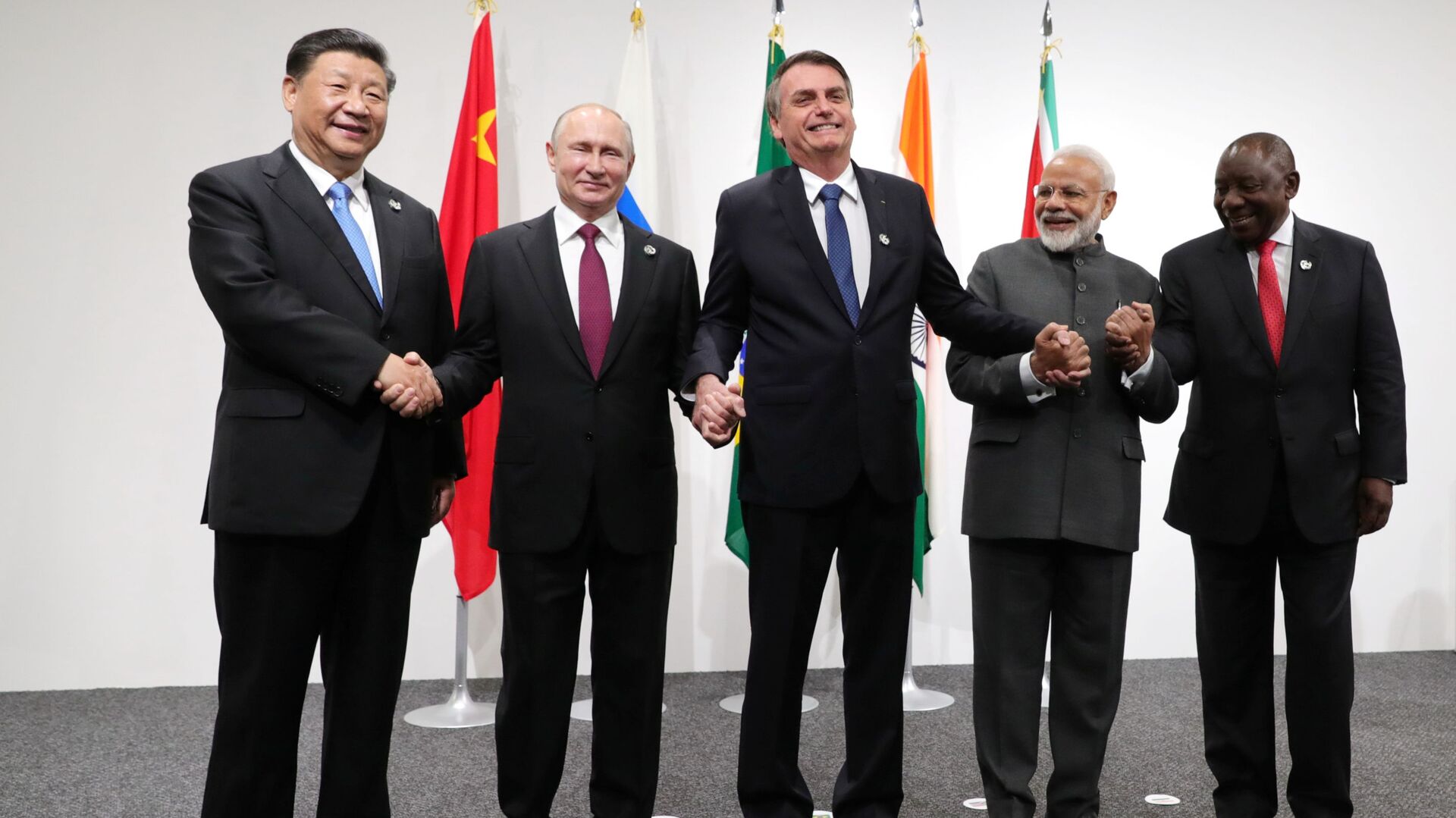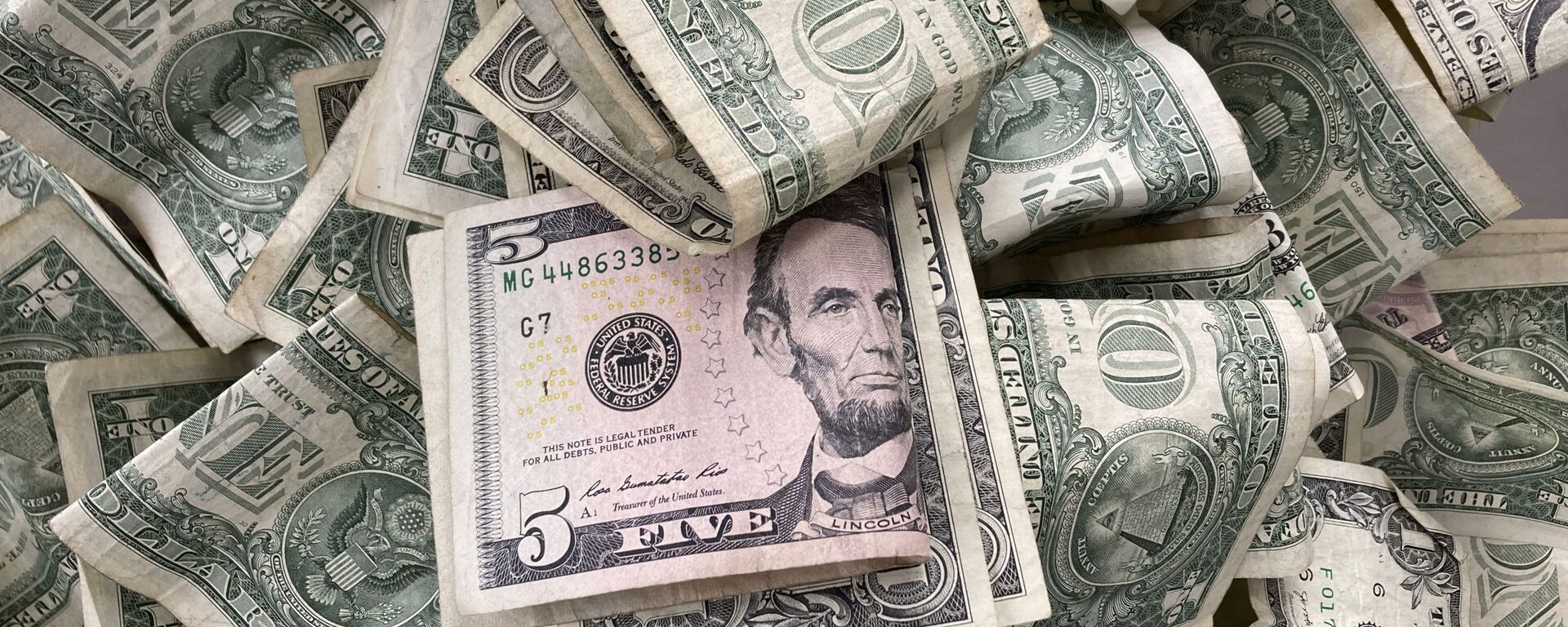13th Anniversary of First Summit: How BRICS Became a Vital Global Economic and Political Force
16:24 GMT 16.06.2022 (Updated: 12:53 GMT 10.11.2022)

© Sputnik / Alexey Nikolsky
Subscribe
The first BRIC summit– the acronym for four major emerging economies of Brazil, Russia, India, and China – took place in Yekaterinburg, Russia exactly 13 years ago. A year later, South Africa joined the club, turning it into the now-famous BRICS, but has the bloc managed to become a worthy alternative to the West?
"BRICS was formed with the intention of protecting BRICS' countries interests, enhancing growth rates, ushering in multipolarity and voicing the concerns of developing countries," says Srikanth Kondapalli, a professor in Chinese studies at Jawaharlal Nehru University, New Delhi, India.
The acronym was coined by the Goldman Sachs economist Jim O'Neill, who argued in his 2001 report ‘Building Better Global Economic BRICs’ that Brazil, Russia, India, and China "should be the building blocks of freshly overhauled global financial and governance systems." O'Neill projected that the collective gross domestic product (GDP) of the largest emerging market economies would steadily grow over the coming years. At that time, the size of the joint economies of the nations which would later form the BRICS alliance was just under 8% of global GDP.
Ironically, the Goldman Sachs economist simply "looked for ways to sell bonds by way of assembling various developing nations into one category that might attract investors," noted former Chilean ambassador to China Jorge Heine in his latest op-ed for Global Times. In the beginning, the group attracted little if any attention from the western media, being derided as a "talking shop."
Likewise, the first BRIC Summit - which took place on 16 June 2009 in Yekaterinburg, Russia - did not excite much furore in the West.

BRICS summit
© Sputnik
However, in October 2016, O'Neill publicly acknowledged that BRICS "grew more" than he initially thought and exceeded his most optimistic expectations. Today, BRICS represents up to 25% of global GDP, 30% of land coverage, 18% of world trade and 40% of the world's population.
What's more, the balance of economic power between the G7 and BRICS has been shifting over the past decade, with the former's share of the global economy steadily contracting from 52% in 2009 to a projected 41% in 2023. For its part, the club of developing nations is making gains in terms of trade, investment and production.
"In many ways the BRICS are emblematic of the New South that has emerged in the past two decades, [which is] very different from the old Third World of yesteryear," wrote Heine. "Their rise is closely associated with and is part of what the World Bank has referred to as the 'Wealth Shift' from the North Atlantic to the Asia-Pacific, and the rise of South-South trade and investment flows to unprecedented levels."
The creation of the New Development Bank in 2015, which received the world's highest possible credit rating of AAA, has also benefited the BRICS' rise.
"The alternate routes established within the BRICS framework mean supply and value chains and working through the New Development Bank," says Dr Anuradha Chenoy, professor of the Centre for Russian and Central Asian Studies at Jawaharlal Nehru University. "This Bank is already giving good loans to developing countries. The funds in this bank should be increased. There should be more trade in local/national currencies. Moreover, a system of free trade agreements that are mutually beneficial should be developed between the BRICS."
BRICS' Role in a Changing World Order
The alliance has also emerged as a vital political actor in the presently "changing world order," according to Chenoy. BRICS heads of state and governments regularly hold meetings to work out joint strategies and approaches.
"As an inter-governmental initiative, the BRICS is trying to look at ways to strengthen growth rates by first contributing to vaccine production and distribution, trade in regional currencies, harmonise energy production and consumption, contribute to revamping Bretton Woods institutions and see if they can have alternative credit rating agencies," says Kondapalli.
Furthermore, the group is becoming instrumental in both assisting and shielding the Global South amid the West's effort to reshuffle world trade and the financial order, highlights Chenoy.
"The BRICS [countries] are functioning in a new global politico-economic environment," the academic says. "Hegemonic powers are pushing for selective de-globalisation, because they believe that the globalisation model that they themselves introduced three decades ago benefitted emerging economies, especially China but also others, while manufacturing slipped away from the western industrial sectors."
As their dominance and economic power fades, the US and its western allies are trying to contain the rise of developing nations, according to the academic. To illustrate his point he quoted US Treasury Secretary Janet Yellen, who told the Brussels Economic Forum in May that western countries should reduce their dependence on China and shift to "friend-shoring" of supply chains and trade, thus closing their markets to "undesired" nations.
In addition, western countries have introduced trade tariffs, bans and sweeping sanctions targeting China, Russia and other developing countries under various pretexts such as human rights and security concerns, thus hampering their economic growth. According to Chenoy, global trade is becoming "exclusive," leaving those countries which are labelled by the West as "threats” out in the cold.
"In these circumstances BRICS should take a lead to diversify global trade, especially with the Global South or developing countries," says the professor. "The US will do everything to prevent its own decline and woo some countries of the BRICS and increase threats about other countries. Any outstanding issue between BRICS countries must be resolved and each must respect the others economic, security and territorial interests. The BRICS has been one of the regional blocs whose growth and development of institutional structures has been much noted. They must not lose this pace."





